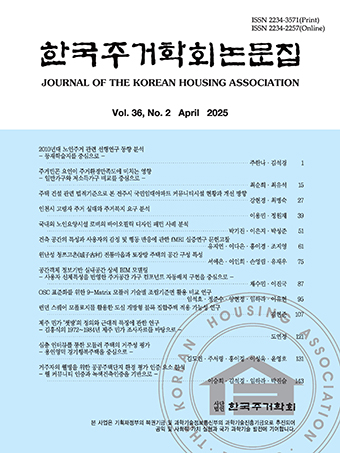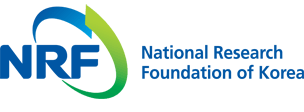Research Article
Aksenova, E. I., Kamynina, N. N., & Turzin, P. S. (2023). Urban stress of a megalopolis resident: stress factors and correctioN. Problemy Sotsial'noi Gigieny. Zdravookhraneniia i Istorii Meditsiny, 31, 1087-1091.
10.32687/0869-866X-2023-31-s2-1087-109138069867Bhattarai, K., & Budd, D. (2019). Effects of rapid urbanization on the quality of life. Multidimensional Approach to Quality of Life Issues: A Spatial Analysis, 327-341.
10.1007/978-981-13-6958-2_21Bhattarai, K., & Budd, D. (2019). Effects of rapid urbanization on the quality of life. Multidimensional Approach to Quality of Life Issues: A Spatial Analysis, 327-341.
10.1007/978-981-13-6958-2_21Clark, D., Kahn, J. R., & Ofek, H. (1988). City size, quality of life, and the urbanization deflator of the GNP: 1910-1984. Southern Economic Journal, 701-714.
10.2307/105901312268703Emma, B., Ngoc Thien Anh, P., Lyrian, D., & Rebecca, B. (2020). New evidence on mental health and housing affordability in cities. A Cities, 96. 1-7
10.1016/j.cities.2019.102455Gan, X., Ye, K., Li, D., Chang, R., & Zillante, G. (2016). Are migrant workers satisfied with public rental housing? A study in Chongqing, China. Habitat International, 56. 96-102.
10.1016/j.habitatint.2016.05.003Hernández, D., Phillips, D., & Siegel, E. L. (2016). Exploring the housing and household energy pathways to stress: a mixed methods study. International journal of environmental research and public health, 13(9), 916.
10.3390/ijerph1309091627649222PMC5036749Kang, S. J., Choi, Y. Y., & Kim, J. H. (2024). A Study on the Effects of Residential Environmental Factors on the Stress of Residents. Journal of Korea Planning Association, 35(2), 1-10.
10.6107/JKHA.2024.35.2.001Kang, S. J., Choi, Y. Y., & Kim, J. H. (2024). A Study on the Effects of Residential Environmental Factors on the Stress of Residents. Journal of the Korean Housing Association, 35(2), 1-10
10.6107/JKHA.2024.35.2.001Kim, J. H., Kim, W. T., & Yoon, Y. H. (2013). Beneficial Effect of Green Landscape on Relieving Stress of Citizen in Urban Area. Korean J Environ Ecol, 27(4), 516-523
Kim, S. H., & Lee, H. N. (2020). Characteristics and Support Directions by Types of Residential Stress Clusters in Single Parent Families After SARS-CoV-2(COVID-19). IDI Urban Research, 18, 9-45.
Ko, K. P. (1997). A Study on the Residential Stress and Inclination to Move. Journal of the Korean Housing Association, 8(2), 71-84.
Lee, J. H., Shin, C, M., Ko, Y. H., Lim, J. H., Joe, S. H., Kim, S.H., Jung. I. K., & Han, C. S. (2012). The reliability and validity studies of the Korean version of the perceived stress scale. Korean Journal of Psychosomatic Medicine, 20(2), 127-134
Lee, M. J. (2020). A Multi-Level Analysis of Ingluentail Factors of Residents' Housing Instability in Korean Metropolitan Environment. Journal of the Korean Regional Science Association, 30(4), 57-67.
Lim, S. H., & Jang, H. S. (2017). A Study on the Impact of Housing Environment of Residents Health. Journal of the Residential Environment Institute of Korea, 15(2), 101-117.
10.22313/reik.2017.15.2.101Lu, S., Wei, F., & Li, G. (2021). The evolution of the concept of stress and the framework of the stress system. Cell stress, 5(6), 76.
10.15698/cst2021.06.25034124582PMC8166217McEwen, B. S., & Akil, H. (2020). Revisiting the stress concept: implications for affective disorders. Journal of Neuroscience, 40(1), 12-21.
10.1523/JNEUROSCI.0733-19.201931896560PMC6939488Moon, H. N., & Song, N. K. (2020). Influence of Living Infrastructures on the Distribution of Single-person Households and Quality of Life. Seoul Studies, 21(4). 157-175.
Moon, H. N., Chai, C. H., & Song, N. K. (2018). Analysis of the effect of perceived neighborhood physical environment on mental health.
Moon, S. J., & Kwak, I. S. (1992). A Study on the Variables Influencing Residential Stress Factors. Journal of the Korean Housing Association, 30(3), 159-175.
Moon, S. J., & Kwak, I. S. (1992). The Effects of Residential Stressors on the Housing Management. Jourmal of Korean Home Management Association, 10(2), 87-97.
Na, H. L., & Jang, Y. J. (2024). The Impact of Childcare And Housing Cost Burden on the Financial Well-Being of Households with Children. Consumer Policy and Education Review, 20(4), 65-91.
10.15790/cope.2024.20.4.065National Center for Mental Health (2024). National Mental Health Knowledge and Attitudes 2024. Ministry of Health and Welfare.
Panda, J., Mukherjee, A., Choudhury, A., & Biswas, S. (2024). Urban Heat: UHI and Heat Stress Threat to Megacities. In Climate Crisis: Adaptive Approaches and Sustainability (pp. 425-445). Cham: Springer Nature Switzerland.
10.1007/978-3-031-44397-8_22Park, J. H., & Eum, J. H. (2024). A Study on Efficient Sidewalk Green Space Development for Improving Urban Themal Environments and Enhancing Pedestrian Comfort. Journal of the Korean Institute of Landscape Architecture, 52(2), 21-38.
10.9715/KILA.2024.52.2.021Park, J. N., & Seo, Y. S. (2010). Validation of the Perceived stress scale(PSS) on samples of Korean university strudents. Korean Journal pf Psychlogy: General, 29(3), 611-629.
Rowley, S., & Ong, R. (2012) Housing affordability, housing stress and household wellbeing in Australia, AHURI Final Report No. 192.
Statistics Korea (2024). Urbanization phenomenon as seen from a statistical regional classification system. Press release. 20240226.
Yates, J., & Gabriel, M. (2006). Housing affordability in Australia. National Research Venture 3: Housing Affordability for Lower Income Australians. Research Paper 3.
Yoon, C. Y., & Jin, J. I. (2024). Housing and Personal Mental Tress during the COVID19 Period. Journal of Korea Planning Association, 59(4), 123-140.
10.17208/jkpa.2024.08.59.4.123- Publisher :The Korean Housing Association
- Publisher(Ko) :한국주거학회
- Journal Title :Journal of the Korean Housing Association
- Journal Title(Ko) :한국주거학회논문집
- Volume : 36
- No :1
- Pages :097-110
- Received Date : 2025-01-17
- Revised Date : 2025-02-10
- Accepted Date : 2025-02-11
- DOI :https://doi.org/10.6107/JKHA.2025.36.1.097



 Journal of the Korean Housing Association
Journal of the Korean Housing Association






